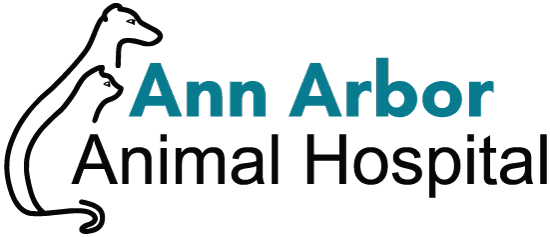by Dr. Cheryl Smith
This post is to alert everyone to the normal holiday concerns, as well as try to drive the point home that we put our pets at risk every day. Making different decisions about what products we really need to use and taking just a few extra precautions can save lives (and really large veterinary bills).
Life savers: doors, baby gates, crates.
If there is a barrier between your pet and the decorated Christmas tree, there is no way lights, decorations, tinsel or gifts can be eaten, trampled or chewed up. This also avoids electrical accidents.
Remember, when we re-arr ange the house to accommodate the tree, things get moved and exposed. Make sure there is nothing of danger to curious or naughty pets.
ange the house to accommodate the tree, things get moved and exposed. Make sure there is nothing of danger to curious or naughty pets.
If your dog does not have access to the garbage, cleaning materials, workshop materials, etc., there will not be accidents.
What dogs do end up getting into:
Chocolates (and other treats) – Tucked away in closets, backpacks and packages, or displayed out in bowls and trays, these are new and novel opportunities available to the incredible nose of the dog. We see dogs that ingest large volumes of chocolate, and mild to dangerous levels of toxicoses do occur. Chocolate is the number one substance that dogs get into that the AAAH receives phone calls about.
Gum – Who knew chewing gum could be deadly? Gums containing xylitol pose great risks to dogs. Dogs become profoundly hypoglycemic (results in seizures and other problems; deadly if not corrected promptly) and can cause a very serious hepatopathy (liver compromise to failure). Preventing absorption of xylitol is very important. (See this older post for more information on chocolate and xylitol.)
Garbage – This is usually a combination of naughty dog and slip up in garbage management. Usually beyond some diarrhea and upset stomach, this is not particularly dangerous. HOWEVER— if there are rotting, fatty foods there is a real danger for more serious gastroenteritis to even severe pancreatitis, which can be very serious.
Vitamins and medications – All the containers of human medications and vitamins have been handled often by beloved owners. Stealing the owner-scented bottles and chewing them can result in overdose of medications or vitamins that can be harmless to deadly.
Marijuana – With the changing laws and public acceptance of marijuana use we are seeing more and more dogs that have ingested enough to get ill. Owners are reluctant to share this with us which can delay best treatment for these patients.
Bones – If dogs find cooked bones and chew them up in tiny bits, there is small chance for serious concern. However, if they wolf down big chunks in the heat of the moment garbage raid, there is concern about sharp fragments of bones getting stuck or poking through the gut in the pathway through the dog’s intestines. Raw bones of appropriate species, cut in safe anatomical choices can be very beneficial in oral and mental health of dogs. (There is some risk of tooth injury and other problems if excessive fat or decaying material is attached to the bone.)
Grapes/raisins – Some dogs cannot properly break down and excrete grapes and raisins. These dogs can suffer severe kidney damage or even failure if not treated promptly to prevent digestion and absorption. They also require IV fluid therapy to attempt to diurese and protect the kidneys.
Onions (and less so garlic) – The sulfurs in onions cause an alteration and damage to red blood cells in dogs. Occasional small bits are not usually a problem. Regular or chronic exposure to very much onion results in serious red blood cell problems that can look similar to immune mediated blood condition.
Rodenticides – Two types of rodenticides are available currently. Untreated, both can be deadly to pets. The dicoumarin type can be treated successfully with vitamin K1 and blood products if identified and addressed soon enough. The other type, Bromethalin, causes inappropriate sodium handling across membranes of cells and treating these dogs once signs have occurred is very challenging with outcomes being much less favorable. (For a focused look at rodenticides, see this older post.)
All the above substances are in some way food, or carried into the patient with food. Unfortunately, dogs eat non-food items that are also life-threatening. Any item that can be swallowed but then not passed readily through the patient can result in obstruction. Delay in treatment, or damage to the intestines, can result in a fixable-with-surgery problem or even septic peritonitis and death.
Other exposures that are dangerous to our pets:
Electricity – All the cords and cables in our high tech lives put lines carrying electricity in reach of inquisitive creatures. If they chomp down and expose themselves to high voltage, serious oral burns to life-threatening lung trauma can occur.
Garage liquids – Oils, paint, paint thinners, antifreeze, windshield wiper fluid, etc. all pose potentially serious toxicity. If something is spilled and they walk through it, then they lick their feet, this can easily be enough to destroy the kidneys (in the case of antifreeze) or cause other serious damage to the oral cavity and GI tract lining. Furthermore, adhesives like gorilla glue and other superglues are very toxic.
Recent Posts
About Us
Ann Arbor Animal Hospital is a locally-owned animal hospital operating for over 90 years in Ann Arbor, MI.
